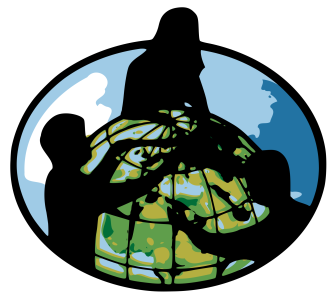
Like many of my friends, I chose self-care last night and didn’t watch the State of the Union live, opting instead to listen and read this morning, after coffee and contemplation.
I have a lot of feelings about the president, his current administration, and its policies. I’m not a political blogger (though, yes, I feel teaching is an inherently political act). So, while I have lots of feelings, I won’t necessarily put them here.
What struck me as an educator, however, was the language the president uses to talk about certain groups of people, particularly immigrants in juxtaposition to those he calls “America’s Children.”
The phrase sat with me, as I’m sure it was meant to. Still, it didn’t conjure up the images of safely swaddled children tucked into American households that the president likely wanted me to feel good he was protecting. When I read the phrase, I immediately wondered, just who does the president define as “America’s Children”? Given that our nation’s history is problematic at best with its treatment of our native people and their children, I struggled with the notion that the president insisted that he has a special loyalty towards “America’s children” when the notion in and of itself calls to light the fact that we are, at our foundation, a nation of immigrants and native peoples displaced by systemic oppression.
While I’m sure the intent of the speech was to make me feel like the president supported children and families, and wanted to see “our youth to grow up to achieve great things,” the language behind those claims rings false.
It’s hard to believe in a leader who, in the same breath he used to claim he was going to protect DREAMers, calls them “illegal,” a term with its own charges and misgivings. It’s hard to trust that “America’s children” are being protected when he lauds ICE agents who, yes, sometimes catch dangerous criminals, but also sometimes rip parents and caregivers away without consideration of or systems that ensure the safety of their children. It’s hard to feel supported when the president aims to protect the “nuclear family,” in a day and age when so many American families are anything but “traditional,” and “America’s children” need the emotional, mental, and legal support to have stable and validated upbringings in their own American families, with all its quirks and unconventionality.
So, where does that leave me?
I’m not a parent yet, but I’d like to think my classroom becomes, in some ways, like a family. Teachers see their students for a significant chunk of their day during the school year. I also firmly believe that our work is so much more than just content—we can also teach and model the socio-emotional skills our students need to thrive in this busy and tumultuous world.
Because if we are teaching “America’s children,” that should mean that we see all the children in our classrooms—regardless of status, sexuality, race, gender, class—as people who we are charged to care for and uplift. Loving our students in that way means seeing and valuing them, modeling what it means for them to value themselves, and teaching them how to value each other. Ultimately, America’s children are the ones walking in our hallways, who were born here or have come here with hopes of a better tomorrow. If America wants to keep its apparent promise as the place that can “uplift the lowly,” we must begin breaking down the systems that held them down and told them they were “lowly” to begin with. America’s children are the ones often being told that they aren’t worthy of America’s promise.
That’s where the work starts, I think. Yes, we need to ensure as teachers we are using language that supports and validates students, but we need to start teaching our students how to support and validate each other. We have to begin incorporating the civic and social education that shows them the humanity within each other. We have to teach them that the language they use and the actions they support have a greater impact on their community. Now, more than ever, our students have to become activated in their power and agency. It’s the only way change and growth comes.
And a desire to change and grow is the reason we’re all here in the first place.

Photo 1: President Donald Trump delivers his first State of the Union address to a joint session of Congress on Jan. 30 in Washington, as Vice President Mike Pence and House Speaker Paul Ryan applaud. —Win McNamee/Pool via AP
Photo 2: Image via Pride Immigration


